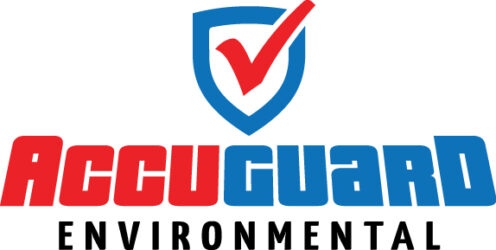When it comes to commercial real estate, purchasing a property is about more than just price, location, and functionality. It’s also about minimizing risk—and that includes environmental risks. Many commercial properties, especially older buildings, may harbor environmental hazards like asbestos, mold, and lead, among other contaminants. Failing to conduct proper environmental testing before closing a deal can lead to expensive surprises, health risks for occupants, and potential regulatory penalties. For buyers, understanding the scope and importance of environmental testing is crucial for safeguarding their investment.
Why Environmental Testing is Critical
When buying commercial real estate, you’re not just purchasing walls and land; you’re inheriting its history. Older properties, in particular, can carry several hidden environmental dangers. Here’s why conducting comprehensive environmental testing is non-negotiable:
- Health Risks
Environmental hazards like asbestos, mold, and lead can pose severe health threats. For example, prolonged exposure to asbestos fibers can cause serious illnesses like mesothelioma, while mold exposure is linked to respiratory problems. Lead, particularly in paint or plumbing, can result in developmental issues, especially in children. These issues could make your property uninhabitable or require costly remediation. - Liability Concerns
Undiscovered hazards can expose you, as the property owner, to legal liability. If tenants, employees, or visitors are harmed by unsafe conditions, you could face lawsuits. Ensuring a clean bill of health for the property protects you from this kind of exposure. - Regulatory Compliance
Many states require property owners to address known environmental hazards in compliance with EPA and OSHA standards. Failure to test and identify these issues can result in fines and delays in property development or use. - Preserving Property Value
Properties with known environmental hazards often see reduced resale value. Identifying and addressing issues upfront protects your long-term investment.
Common Environmental Hazards in Commercial Real Estate
Understanding what you’re testing for is half the battle. Below are the primary hazards buyers should assess when considering a commercial property:
- Asbestos
Frequently found in insulation, roofing, floor tiles, and cement products in buildings built before the 1980s, asbestos becomes hazardous when disturbed during renovations or regular wear and tear. - Mold
Mold thrives in areas with moisture issues like leaky pipes, poor ventilation, or flooding damage. It spreads quickly and can harm air quality, as well as structural integrity. - Lead
Once a common ingredient in paint and plumbing systems, lead remains a significant concern in properties constructed before 1978. Over time, lead-based substances deteriorate, releasing particles harmful to humans and the environment. - Contaminated Soil or Groundwater
Industrial properties and even some commercial sites may have residual contamination in the soil or underground water from previous chemical use, spills, or improper waste disposal. - Radon
This naturally occurring, radioactive gas often accumulates in basements or lower levels of buildings. Radon exposure increases the risk of lung cancer and requires proper ventilation systems to mitigate its effects.
Key Environmental Tests Before Closing
To ensure a commercial property is free from environmental hazards, it’s important to conduct several critical tests. These assessments are typically performed by environmental professionals and should include:
- Phase I Environmental Site Assessment (ESA)
This preliminary evaluation reviews the site’s environmental history, previous land use, and any potential risks. While it doesn’t involve physical sampling, it highlights red flags that might require additional investigation. - Phase II Environmental Site Assessment
If Phase I raises concerns, Phase II involves detailed lab testing of soil, groundwater, building materials, and air to confirm the presence of hazards like asbestos, mold, or lead. - Lead Testing
Both X-ray fluorescence (XRF) testing and lab sampling may be used to detect lead in paint, pipes, and soil. - Mold Inspection and Air Quality Testing
By assessing humidity levels, hidden moisture damage, and air quality, mold inspectors can find mold growth that’s not always visible to the naked eye. - Asbestos Survey
A comprehensive asbestos inspection examines materials like drywall, insulation, and floor tiles for asbestos content. Samples may be taken for laboratory testing, particularly in older buildings. - Radon Testing
Radon levels are measured over a specified period to ensure they remain below the EPA’s action level of 4 pCi/L. - Underground Storage Tank (UST) Testing
For properties with storage tanks underground, testing for leakage or contamination around the tank is essential.
Practical Advice for Buyers
Navigating environmental testing can seem overwhelming, especially for first-time commercial buyers. Here are some tips to ease the process:
- Hire Qualified Professionals
Always work with licensed environmental inspectors who are trained to identify and test for specific hazards. A reputable professional will provide detailed reports and remediation recommendations. - Budget for Testing and Remediation
While environmental testing adds upfront costs, it pales in comparison to the price of mitigation or legal liability down the line. Factor these costs into your purchase negotiations. - Review Existing Environmental Reports
Many sellers conduct limited environmental assessments to attract buyers. Carefully review these reports but conduct your own independent testing to verify their findings. - Negotiate Repairs with the Seller
If hazards are identified, you could potentially negotiate terms for the seller to perform remediation or reduce the purchase price, enabling you to address the issues post-sale. - Ensure Proper Documentation
Keep all testing results, permits, and compliance documents. These protect you during legal challenges and speed up processes like property resale. - Plan for Periodic Testing and Maintenance
Even after purchase, regular testing and maintenance should be part of your property management routine to prevent future risks.
Partnering with Experts
Environmental testing is not only wise—it’s necessary. By investing in comprehensive assessments, you ensure the safety, value, and regulatory compliance of your commercial property. At AccuGuard Environmental, we specialize in providing reliable, accurate testing services tailored to the needs of commercial real estate buyers. Our certified experts leverage cutting-edge technology to identify hazards and guide you through next steps, giving you confidence in your investment.
Whether you’re in the preliminary stages or ready to close, contact us to discuss how we can assist with your environmental testing needs. Your due diligence today protects your success tomorrow.

